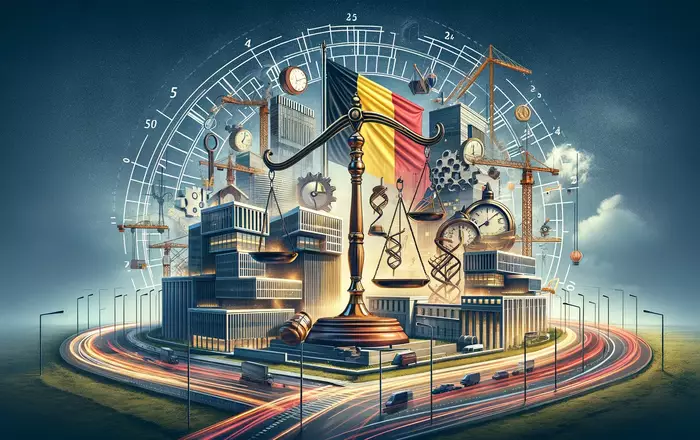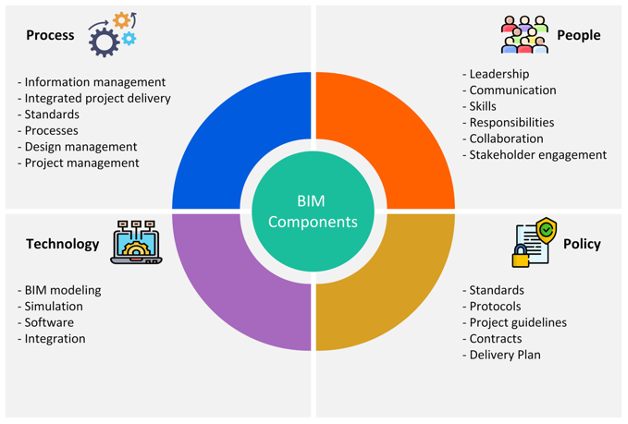
Embracing the future: Our take on Building Information Modeling (BIM)



In this blog post, former colleague Abdallah Baydoun briefly explains about BIM, the problem and how can Project Controls add value to BIM based projects.
Over the past few years, Building Information Modeling (BIM) has been hailed as the transformative force that will revolutionize the construction industry. While it may not have fully realized its potential yet, there is strong reason to believe that BIM will indeed make a significant impact. In this blog post, we will delve into the essence of BIM, the challenges it faces, and how Project Controls can add substantial value to BIM-based projects.
What is BIM?
For those who do not know what BIM is, it is a process where information models and data sets are created and managed in a shared digital space known as a common data environment or CDE. This data is composed of graphical (e.g. 3D model) and non-graphical information (e.g. specifications, schedule, costs, etc.) which evolves throughout the project’s lifecycle. The successful implementation of Building Information Modeling (BIM) involves four interrelated components that span across different sectors: Process, People, Technology and Policy.

But what is the essence of BIM and how is that related to Project Controls?
In essence, the philosophy of BIM revolves around creating integrated information models which stimulate collaboration among the various project teams. This should ultimately lead to successful project delivery and create maximal value to all stakeholders through the project’s complete lifecycle.
Now let’s look at Project Controls, for a detailed explanation of what is Proove's perception of Project Controls you might want to look at one of our previous blog posts, Project Controls - a definition. As a short resumé, Project Controls covers the aspects of project management that estimates, models, analyses, predicts, measures, reports and visualizes project data. Moreover, Project Controls becomes especially powerful when integrating the information from the various knowledge areas (e.g. time, scope, resources, cost, risks et cetera). But what is the essence of this complex discipline? It is to generate insights in the project that will support and influence decision making so that projects will be successfully delivered and maximal value to all stakeholders will be created.
In short, both focus on achieving successful project delivery through integration and aim at creating maximal value to all stakeholders!
But is that all? In fact, if you do more research on BIM and Project Controls separately you would notice that they share common ideals, namely:
- Both require integrated information models.
- Both strive for transparency and collaboration.
- Both tackle uncertainty for successful project delivery.
- Both see the necessity of common data structures and environments.
Today's challenges
As you noticed, the philosophies are very much aligned however unfortunately, the practices are not. At the moment, or at least in Belgium, BIM is very much residing in the engineering department with focus on the graphical information. While this is surely important and adds a lot of value to the project, still the full potential of BIM is not being utilized. Owners are spending millions to engage with the BIM philosophy but only end up with a lengthy engineering stage to achieve the perfect 3D model. Yes, we are detecting all clashes, yes we are assuring that the latest design status is used among all project team members, yes we are making the design more sustainable by modeling light, energy et cetera, but what about the management of time, cost and scope?
The good news: Project Controls to the rescue!
While BIM professionals have a very different mindset than the typical Project Controls professional, both are complementary and needed to achieve the potential of implementing BIM to the fullest. Specifically, BIM professionals have a bottom-up approach, they tackle uncertainty by adding more modeling details, while within Project Controls a more top-down, transversal and objective-driven approach towards project delivery is advocated.
At Proove, we do believe in BIM as one of the trends with a big future in construction projects, but we think that in order to succeed in delivering the expected value, BIM needs to be influenced from the Project Controls community.
This is what Proove as Project Controls professionals can add to BIM oriented projects:
- Increased focus on the project objectives, i.e. the triple constraints (time, cost and scope). Bottom-line, to convince owners of the feasibility of applying BIM into their projects, you need to help generate extra value to the project and business case, otherwise why would they engage in extra investments?
- Projects are in definition unique endeavours with a strict timeline. BIM tends to get stuck in the details then lose track of the high-level timeline and the integration of engineering, procurement, construction, et cetera. Project controls professionals can add the required focus on the high-level project flow of the project.
- BIM and Project Controls are both about common data structures (PBS, WBS, CBS), but Project Controls is more mature in managing & integrating time, cost, risk and resources. BIM models tend to oversimplify these aspects, while scheduling, cost control and risk management are all professions on their own. Their integration is very challenging.
- BIM addresses uncertainty by more modelling. Project Controls can add a more dynamic way of dealing with risks, uncertainties and contingencies. Don’t forget that most projects fail because of external risks and uncertainties, that are not going to be solved by 3D modelling but rather by analytics.
- Project Controls will also add techniques, KPI’s and reports that trigger taking actions and ultimately lead to increasing the value delivered in BIM based projects. This is done by engaging a dynamic analytics and visualization process for a lot of the non-graphical information.
We, Project Controls professionals, are confident that by applying Project Controls and BIM, the best of both worlds can be combined to generate maximal value to any project.
Editor's note: This article represents an updated version of a blog post originally authored by our former colleague, Abdallah Baydoun


